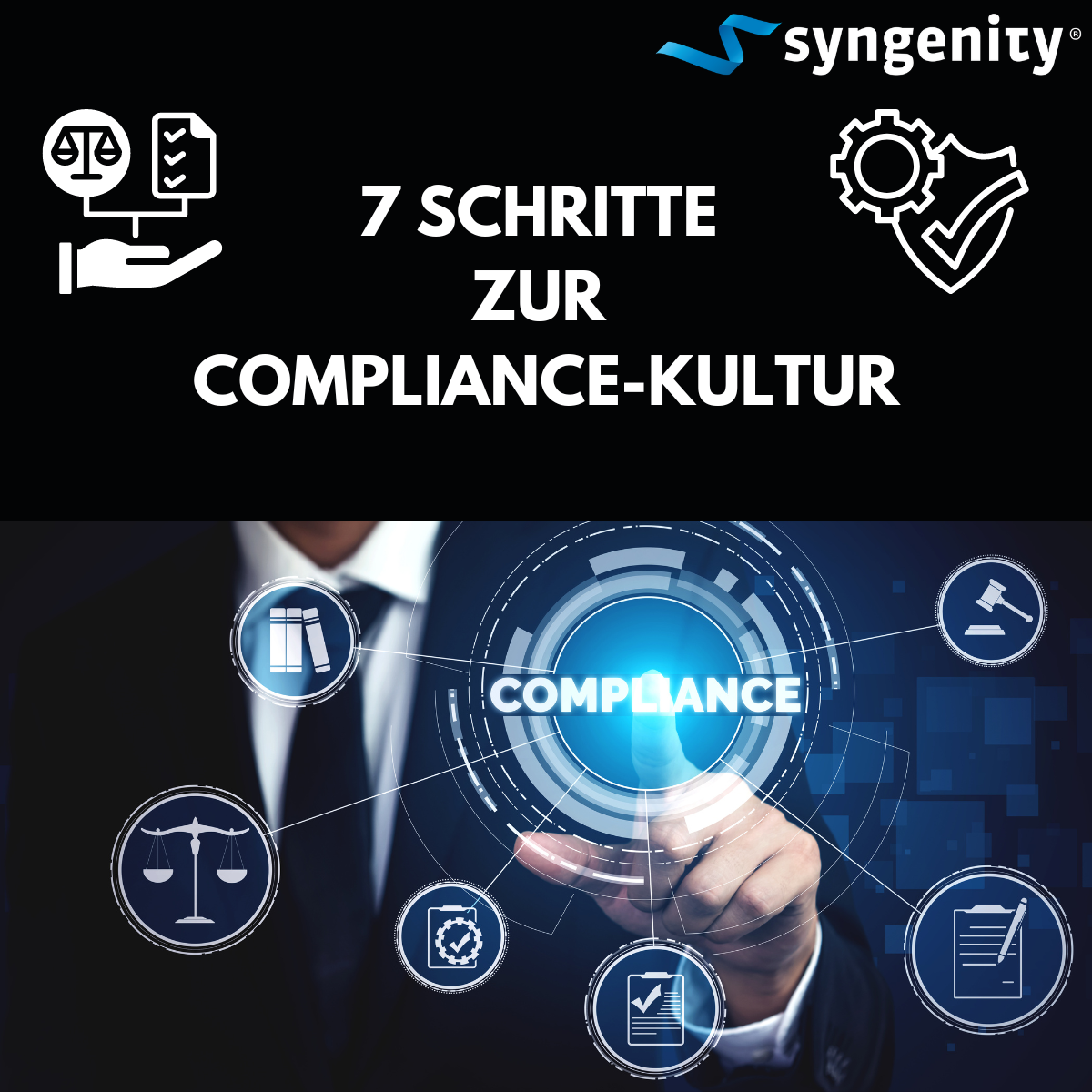7 steps to building a culture of compliance in your organisation
Compliance is more than just adhering to legal regulations – it is the cornerstone of a corporate culture that creates trust, transparency and long-term success. In a world where data is becoming increasingly valuable, compliance plays a central role, particularly in information security management (ISMS). It not only ensures that sensitive information is protected, but also that risks are minimised and the company becomes more resilient to threats. But how do you build a sustainable compliance culture? A strong compliance culture doesn’t happen overnight – it requires commitment, clear communication and the use of modern technology. Here are seven ways that can help establish such a culture in your organisation.
1. leadership by example
A strong compliance culture starts at the top of the organisation. Managers must not only be informed about the applicable regulations, but must also actively exemplify them. Ethical behaviour and compliance with safety standards should be authentically exemplified by company management. Only when employees see that their superiors take the guidelines seriously will they be prepared to do the same. Managers have a responsibility to create a culture of integrity and safety in which transparency is promoted and violations or risks are recognised at an early stage. By setting clear ethical standards and consistently adhering to them, managers set an example for their teams to follow.
2. clear communication of guidelines
A compliance culture can only be effective if all employees know and understand the rules and guidelines. Transparency is key – every employee must know what is expected of them. This is not just about distributing rules and regulations, but also about communicating them in a way that everyone can understand. Organisations should ensure that policies are accessible and are reviewed and updated at regular intervals. Clarity about expectations and behaviour minimises misunderstandings and makes it easier for employees to make the right decisions.
3. training and further education
Regular training is essential to keep employees’ knowledge up to date. The threat situation is constantly changing, particularly in the area of information security and risk management, which requires continuous training. Training courses help to raise awareness of risks and provide employees with the knowledge they need to recognise potential dangers at an early stage. Well-structured training programmes make compliance and security topics an integral part of daily activities. This not only creates greater acceptance, but also promotes proactive risk management.
4. responsibility at all levels
Compliance should not just be seen as a task for the legal or IT department – it affects every level of the organisation. Every employee is responsible for adhering to the standards and should be aware of this. Companies should create mechanisms to ensure that all employees are actively committed to compliance and security. This can be encouraged through clear responsibilities and accountabilities, but also by recognising and rewarding adherence to compliance standards. Practising responsibility at all levels ensures that compliance is not seen as a chore, but as a common goal.
5 Internal and external audits
Audits play an important role in ensuring that the compliance measures implemented are effective and are adhered to on an ongoing basis. Internal audits help to identify weaknesses at an early stage and rectify problems before they cause major damage. External audits, on the other hand, serve to confirm that internal processes and measures comply with international standards. At Syngenity®, we support companies with independent internal audits of their management systems. Our experts help you to ensure that your compliance requirements are met and that potential risks can be recognised and addressed at an early stage.
6. open feedback culture
An open feedback culture is an essential component of a successful compliance culture. Employees should be encouraged to report concerns or possible violations without fear of negative consequences. This is the only way the company can react to problems in good time and rectify them before they cause serious damage. An anonymous reporting system can help to lower inhibitions and ensure that all employees have the confidence to communicate problems. An open and transparent corporate culture helps to minimise risks and strengthen cooperation.
7. technological support
ology plays a crucial role when it comes to efficiently organising compliance processes. Modern software solutions can help to automate compliance with regulations, identify risks at an early stage and manage data centrally. Risk management tools and automated monitoring systems offer valuable support, particularly in information security management. By using technology, companies can ensure that compliance is not only adhered to, but that potential vulnerabilities are recognised and remedied immediately. This efficiency helps to make compliance processes less error-prone and minimise the risk of breaches.
Conclusion: Compliance as a success factor
Compliance is much more than a legal obligation – it is an opportunity to strengthen the trust of customers and employees and ensure long-term success. By integrating compliance into the corporate culture, companies can not only minimise risks, but also create a culture of transparency, security and responsibility. If you need assistance in implementing a sustainable compliance strategy, we at Syngenity® are ready to support you. Our experts offer independent internal audits to help you optimise your management systems and ensure that all compliance requirements are met.







